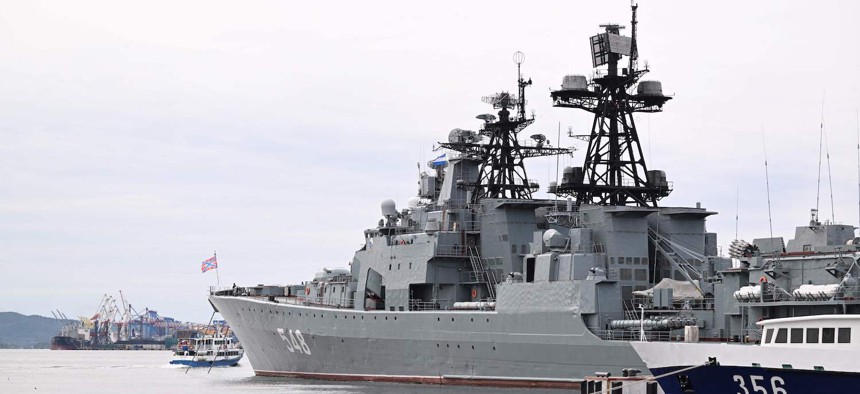Shortly after Ukraine successfully destroyed a Russian Kilo-class submarine while it was in dry dock, the United Kingdom’s top naval officer heralded a new era in naval warfare.
Adm. Sir Ben Key referred to the advancements in propulsion, gunnery, and armor that prompted a strategic overhaul for the British and German navies in the early 1900s as a “dreadnought moment” brought about by uncrewed vessels and automation. Speaking at the DSEI arms show in London, Key emphasized that the world was now experiencing another paradigm shift in naval warfare.
Key highlighted the United Kingdom’s own progress in unmanned systems, citing the development of Europe’s largest unmanned submarine, the Cetus, the deployment of an unmanned minesweeper, and ongoing experiments with uncrewed air systems.
The admiral also underscored the significance of Ukraine’s recent strikes on Russia’s Black Sea fleet using missiles and explosive-laden unmanned vessels. He explained that these attacks had important implications for both offensive and defensive strategies for navies.
On one hand, Ukraine’s successful attacks provided valuable insights into the offensive capabilities and tactics that other navies should consider adopting. On the other hand, these successes highlighted the need for navies to reevaluate their defensive strategies. Key emphasized the importance of ensuring that the UK’s navy doesn’t become vulnerable to the same types of attacks that the Ukrainians employed against the Russians.
Ukraine faced significant losses in its navy following Russia’s annexation of Crimea in 2014, and additional losses occurred during Russia’s full-scale invasion of Ukraine in February of the following year. Notably, in early March, Ukraine chose to scuttle its last remaining frigate as Russian forces approached its berth in the port city of Mykolaiv.
Since then, Ukraine has achieved several victories against Russia. In April 2022, Ukraine used Neptune missiles to sink the Russian Black Sea flagship, the Moskva, followed by the sinking of the supply ship, the Spasatel Vasily Bekh, with Harpoon missiles.
Ukraine has also adapted uncrewed technology for maritime use. In June, a naval drone known as the “Sea Baby” damaged the Kerch bridge, connecting Russian-occupied Crimea to Russia. In August, a drone boat sailed hundreds of miles from Ukrainian territory, entered the Russian port of Novorossiysk, and severely damaged a Russian warship.
Notably, Ukraine’s Magura V5 unmanned vessel can be produced at a rate of 20 vessels per week, a stark contrast to the lengthy production timelines of traditional naval ships. This drone, designed by a combination of commercial and military engineers, utilizes commercial technology to reduce costs. However, it also relies on commercial satellite technology, like Starlink, for guidance, which can pose its own set of challenges. Elon Musk’s limitations on Starlink’s use and the susceptibility of such systems to jamming are among the concerns.
Nevertheless, Sybryiakov regarded Starlink as a significant advantage, despite the restrictions placed by Musk, noting its role in Ukraine’s naval drone operations.
*The views and opinions expressed on this website are solely those of the original authors and contributors. These views and opinions do not necessarily represent those of Spotter Up Magazine, the administrative staff, and/or any/all contributors to this site.
SOURCE
https://www.defenseone.com/threats/2023/09/navies-face-dreadnought-moment-ukraine-destroys-more-russian-warships-british-admiral-says/390271/

